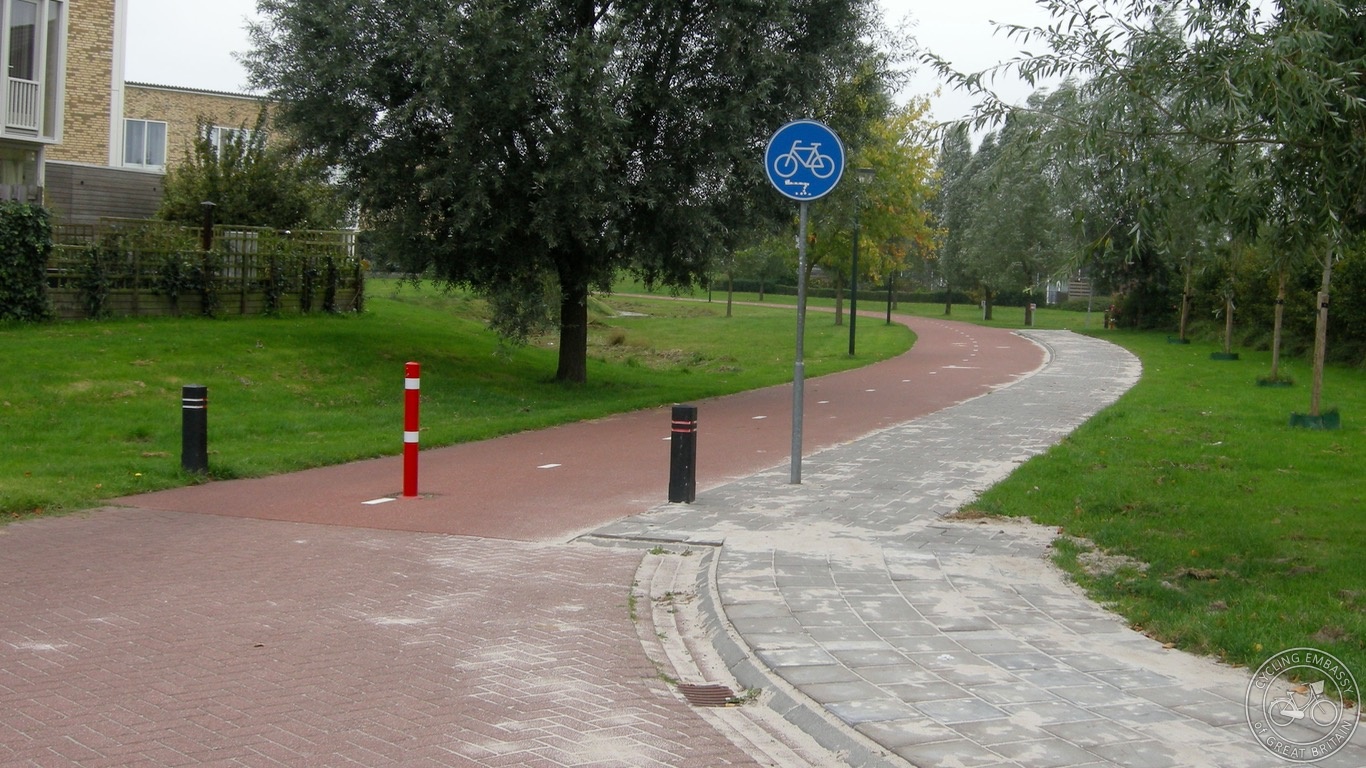Cycle path
A motor traffic-free route specifically for cycle traffic that does not run parallel to an existing highway. In other words, they are distinct routes, separate from the road network. They may, for instance, connect a new development to a town by the most direct route, while the road network is more circuitous.
Cycle paths should not be confused with cycle tracks, which run parallel to (along) roads.
Cycle paths will always accommodate two-way cycle traffic and should therefore be designed with a dashed centre-line marking, and should be of appropriate width. In rural areas with low demand, they should be at least 2.5-3m wide. In urban areas with peak flows of over 100 cycles per hour, they should be at least 4m wide.
Pedestrians are free to walk on cycle paths, but where flows of pedestrians (and cycles) are higher, a separate footway should be provided, at least when pedestrian flow is greater than 100 per hour, per metre of width.
A cycle path with separate footway, Assen, NL -

